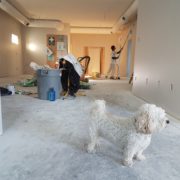How Depreciation Works for a New Investment Property
The value of everything diminishes over time. This holds true for everything you buy or own. So if you buy a television, then its value will diminish by a certain amount or percentage every year. This is called depreciation. The extent of depreciation depends on the expected life of the television. So if you bought it for $800 and you expect it to function for 4 years, then each year the depreciation is $200. When it comes to buying, owning, and selling real estate, the principle of depreciation works in the same way. The process for claiming depreciation on investment property must be clearly understood to ensure that unnecessary tax is not paid. The tax depreciation investment property rules are different for old (already existing) property and new property. Let us examine the various aspects of depreciation on a new investment property.
Types of Tax Depreciation Investment Property
Depending on which part of the property is being assessed, there could be two categories of assets for which depreciation can be claimed, as per the guidelines of the investment property depreciation schedule ATO. The first is the capital works assets. This refers to the actual structure which is immovable in nature. It includes the cost of the walls and roof of the house as well. These assets are expected to last for much longer. For example, the depreciation of a building is expected to take place over a period of 40 years, so each year the depreciation would be only 2.5%. The second category is referred to as the plant and machinery assets. These are other assets which are added on to the house, and which have much shorter life spans. For example, the curtains, air conditioners, computers etc. would all be calculated as plant and machinery assets. For the calculation of tax depreciation investment property, the ATO has made a detailed list of expected lifespans of all the possible assets in a house.
Ways of calculating depreciation
There are usually two ways in which depreciation can be calculated. We already discussed how depreciation means the gradual reduction of the value of an asset over its service life till it becomes zero. The two ways of calculating depreciation assume different velocities of this reduction of value. The prime cost method assumes that the depreciation takes place in equal amounts every year. On the other hand, the diminishing value method assumes that the drop in value is greater in the first few years and then flattens out.
How to Create a Depreciation Schedule
We have already discussed the two types of assets for calculating depreciation. We also saw the two different ways of calculating depreciation. But beyond these two things, there are other factors that need to be taken into account for calculating a depreciation schedule. Based on this depreciation schedule, the tax write-offs and allowances would be calculated by the ATO. That is why it is very important that the depreciation schedule is perfectly created so that you do not lose out on any allowable deductions, nor do you end up paying extra tax. That is why it is important that you use the services of a good tax consulting agency. A good agency would have your property evaluated by a qualified quantity surveyor, who would list down every small and big asset on your property. Based on the report provided, your tax returns can be accurately filed.
The rules governing existing and new investment properties in Australia are different. If you want to get the best benefits from your tax depreciation investment property, you need to use the services of a dependable tax consulting agency.












